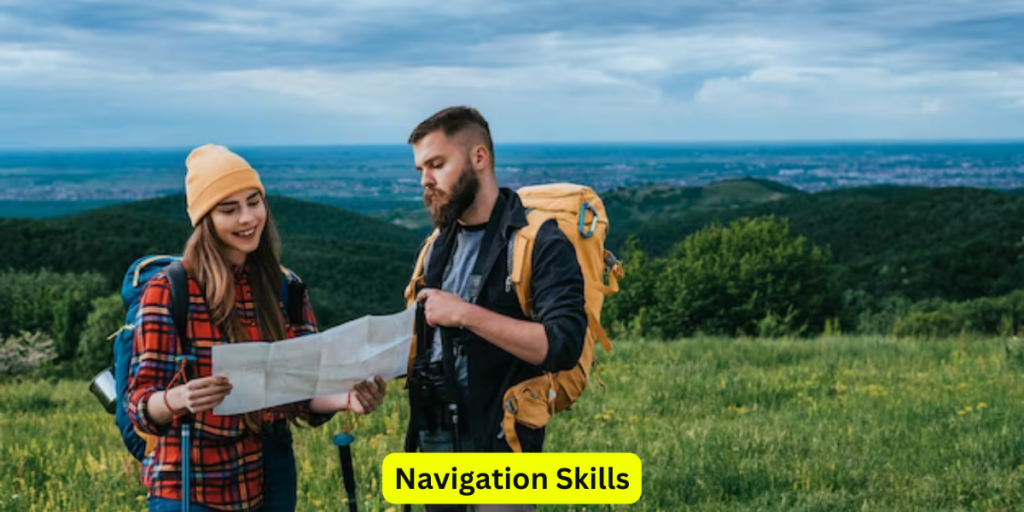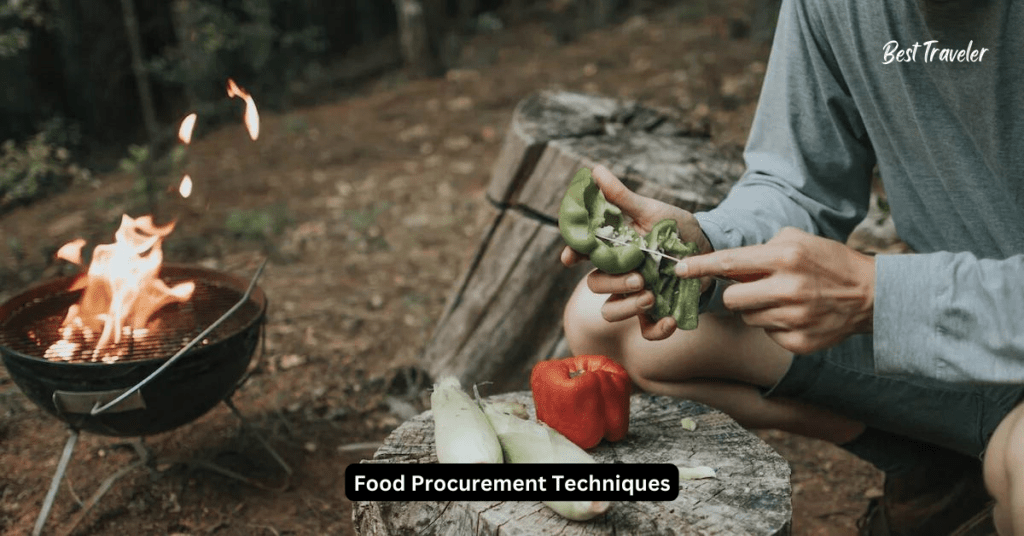Introduction
Backpacking is a thrilling adventure that allows you to connect with nature, explore new terrains, and challenge yourself physically and mentally. Whether you’re trekking through lush forests, scaling rugged mountains, or traversing desert landscapes, it’s crucial to be equipped with the essential survival skills to ensure a safe and enjoyable journey.
In this comprehensive guide, we’ll delve into the must-have survival skills for backpackers. From navigation techniques to shelter building, first aid essentials to food procurement, each skill is indispensable for overcoming the challenges that may arise in the wilderness. By mastering these skills, you’ll be better prepared to handle emergencies, navigate unfamiliar terrain, and make the most of your backpacking adventures.
Navigation Skills

Mastering Navigation Techniques
Navigation skills are paramount for backpackers venturing into remote wilderness areas where GPS signals may be unreliable or nonexistent. Being able to orient yourself using a map and compass, as well as natural landmarks, can mean the difference between reaching your destination safely or getting lost in the wilderness.
Map Reading
- Familiarize yourself with topographic maps and symbols.
- Learn how to interpret contour lines to understand elevation changes.
- Identify key features such as rivers, lakes, and mountain peaks.
Compass Navigation
- Understand how to use a compass to determine direction.
- Learn about magnetic declination and how to adjust for it.
- Practice triangulation techniques to pinpoint your location on a map.
Using Natural Landmarks
- Learn to navigate by observing natural features such as the sun, stars, and terrain.
- Recognize prominent landmarks that can serve as reference points.
- Pay attention to the direction of rivers and prevailing winds for orientation.
By honing your navigation skills through practice and experience, you’ll gain the confidence to navigate confidently in any wilderness setting, enhancing your backpacking adventures.
Shelter Building

Building Shelter in the Wilderness
Having the ability to construct shelter is essential for backpackers facing unexpected weather changes, emergencies, or unplanned overnight stays in the wilderness. A well-built shelter provides protection from the elements, helps regulate body temperature, and enhances safety and comfort during outdoor adventures.
Types of Shelter:
- Select a suitable location away from potential hazards such as falling branches, flooding, or animal dens.
- Use available materials such as branches, logs, and leaves to construct the framework of the shelter.
- Layer insulating materials such as leaves, grass, or pine needles to create a barrier against cold and moisture..
By mastering shelter building techniques and improvising with available resources, backpackers can create safe and comfortable shelters to weather the elements and survive in the wilderness.
First Aid Essentials

Essential First Aid Skills for Backpackers
Injuries and medical emergencies can occur unexpectedly during backpacking trips, making it essential for backpackers to have basic first aid knowledge and skills. Whether it’s treating minor cuts and bruises or managing more serious injuries, knowing how to administer first aid can make a significant difference in the outcome of an emergency situation.
First Aid Kit Essentials
- Antiseptic wipes and ointment for cleaning and treating wounds.
- Bandages, gauze pads, and adhesive tape for dressing injuries.
- Tweezers and scissors for removing splinters and cutting bandages.
- Pain relievers, antihistamines, and anti-inflammatory medications for managing pain and allergic reactions.
Basic First Aid Techniques
- Assess the situation and ensure the safety of the injured person and yourself.
- Clean and disinfect wounds using antiseptic wipes or sterile saline solution.
- Apply direct pressure to control bleeding and elevate the injured limb if possible.
- Use bandages and dressings to cover wounds and prevent infection.
- Monitor vital signs such as breathing, pulse, and consciousness while waiting for medical assistance.
By equipping themselves with a well-stocked first aid kit and basic first aid skills, backpackers can effectively respond to medical emergencies and provide essential care until professional help arrives.
Food Procurement Techniques

Mastering Food Procurement in the Wilderness
Securing a reliable source of food is essential for sustaining energy and nutrition during extended backpacking trips in the wilderness. While packing lightweight and non-perishable food items is essential, backpackers should also be prepared to forage for wild edibles and employ basic hunting and fishing techniques to supplement their diet.
Foraging for Wild Edibles
- Learn to identify edible plants and mushrooms native to the region you’ll be backpacking in.
- Familiarize yourself with foraging guidelines and ethical harvesting practices to minimize environmental impact.
- Avoid consuming plants with toxic look-alikes and prioritize species that are abundant and easily recognizable.
Basic Hunting Techniques
- Practice small game hunting techniques such as trapping, snaring, and stalking.
- Carry lightweight hunting equipment such as snares, traps, and a small caliber firearm or bow and arrows.
- Follow local regulations and ethical hunting practices to ensure sustainable and responsible hunting.
Fishing in Wilderness Settings
- Pack a lightweight fishing kit including hooks, line, and bait suitable for the target fish species.
- Identify suitable fishing spots such as rivers, lakes, and streams with abundant fish populations.
- Practice catch-and-release techniques to minimize impact on fish populations and preserve the ecosystem.
By mastering food procurement techniques such as foraging, hunting, and fishing, backpackers can enhance their self-sufficiency in the wilderness and enjoy a diverse and nutritious diet during their outdoor adventures.
Conclusion & Recap
In conclusion, mastering essential survival skills is paramount for backpackers embarking on wilderness adventures. From navigation techniques to shelter building, first aid essentials to food procurement, each skill plays a crucial role in ensuring safety, comfort, and self-sufficiency in the wilderness.
Recap of Essential Survival Skills for Backpackers:
- Navigation Skills: Master map reading, compass navigation, and using natural landmarks to navigate confidently in the wilderness.
- Shelter Building: Learn to construct shelters using available materials to protect against the elements and enhance comfort during outdoor adventures.
- First Aid Essentials: Equip yourself with a well-stocked first aid kit and basic first aid skills to effectively respond to medical emergencies in the wilderness.
By honing these essential survival skills and being prepared for the unexpected, backpackers can embark on their outdoor adventures with confidence, resilience, and a greater appreciation for the beauty and challenges of the natural world.
Frequently Asked Questions (FAQs)
What are the most important survival skills for backpackers?
The most important survival skills for backpackers include navigation techniques, shelter building, first aid essentials, and food procurement techniques. These skills are crucial for ensuring safety, comfort, and self-sufficiency in the wilderness.
How can I improve my navigation skills for backpacking trips?
You can improve your navigation skills by practicing map reading, compass navigation, and using natural landmarks. Consider taking navigation courses or joining outdoor clubs to gain hands-on experience and guidance from experienced backpackers.
What should I include in my backpacking first aid kit?
Your backpacking first aid kit should include essential items such as antiseptic wipes, bandages, gauze pads, adhesive tape, pain relievers, antihistamines, and oral rehydration salts. Tailor your kit to your specific medical needs and the duration of your trip.
How can I build a shelter in the wilderness with limited resources?
You can build a shelter in the wilderness using available materials such as branches, leaves, and foliage. Consider constructing simple shelters such as tarp shelters, A-frame shelters, or debris shelters, depending on the terrain and weather conditions.
What are some tips for foraging for wild edibles while backpacking?
When foraging for wild edibles while backpacking, it’s essential to accurately identify edible plants and mushrooms native to the region. Follow foraging guidelines and ethical harvesting practices, and avoid consuming plants with toxic look-alikes.
Is hunting allowed in all wilderness areas, and what are the regulations?
Hunting regulations vary by location, so it’s essential to research and comply with local hunting laws and regulations before engaging in hunting activities in wilderness areas. Practice ethical hunting techniques and prioritize safety at all times.
What fishing equipment should I pack for backpacking trips?
For backpacking trips, pack lightweight fishing equipment such as hooks, line, and bait suitable for the target fish species. Consider carrying a compact fishing rod or hand line to minimize weight and space in your backpack.
How can I stay safe from wildlife encounters while backpacking?
To stay safe from wildlife encounters while backpacking, familiarize yourself with common wildlife species in the area and their behavior. Store food securely, avoid leaving food scraps or trash around your campsite, and follow proper wildlife safety protocols.
What should I do in case of a medical emergency in the wilderness?
In case of a medical emergency in the wilderness, assess the situation, ensure the safety of the injured person and yourself, and administer first aid as necessary. If possible, seek assistance from nearby hikers or outdoor enthusiasts, or activate emergency communication devices if available.
How can I minimize my environmental impact while backpacking?
To minimize your environmental impact while backpacking, follow Leave No Trace principles such as packing out all trash, minimizing campfire impacts, respecting wildlife and vegetation, and staying on designated trails. Leave wilderness areas as you found them to preserve their natural beauty for future generations.

